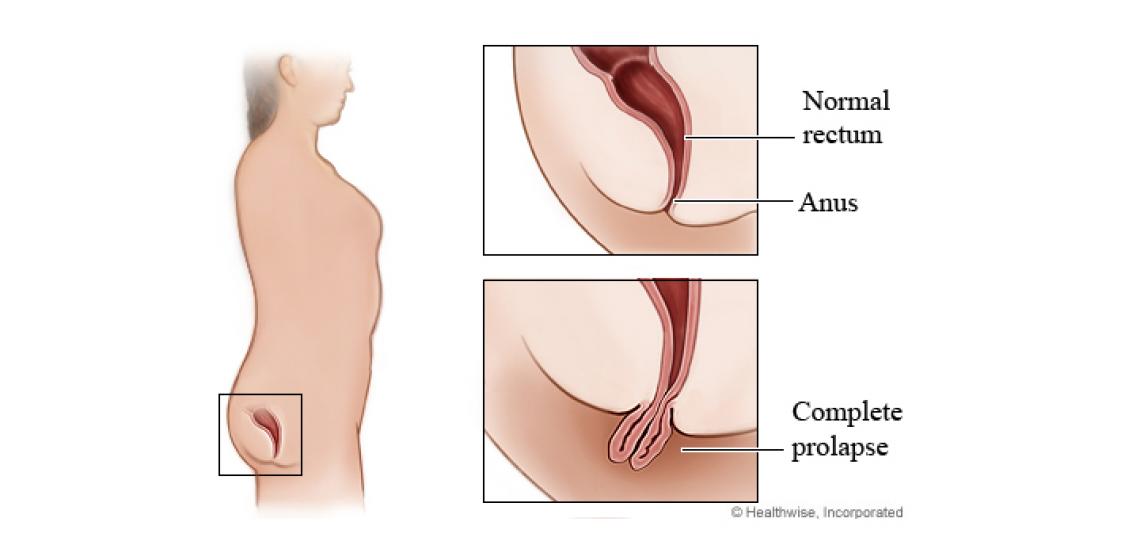What Is rectal prolapse?
Rectal prolapse is a condition in which loose tissue near the end of the large intestine (rectum) slides downward. The tissue may partially or completely stick out of (protrude from) the anus.
There are three types of rectal prolapse:
Partial prolapse (also called mucosal prolapse). Only the lining (mucous membrane) of the rectum slides downward and usually comes out of the anus only when the person strains to have a bowel movement. Partial prolapse is most common in children younger than 2. A partial prolapse may sometimes be confused with hemorrhoids.
Internal prolapse (intussusception). One part of the wall of the large intestine (colon) or rectum may slide into or over another part of the rectum, like the folding parts of a toy telescope. The rectum does not protrude outside the anus. Intussusception is most common in children and rarely affects adults. In children, the cause is usually not known. In adults, it is usually related to another intestinal problem.
Complete prolapse. A segment of the wall of the rectum slides down and protrudes from the anus. In the beginning, this may occur only during a bowel movement. In later stages, the prolapse may occur when the person stands or walks or may remain outside the body all the time.
Rectal prolapse is most common in young children and older female adults. Although many conditions increase the risk for rectal prolapse, it is often difficult to find the exact cause.
Treatment of a rectal prolapse depends on the type of prolapse. It may involve changes in diet, medicines such as stool softeners, or surgery.
© 2016-2019 Healthwise, Incorporated.








 Credit
Credit
